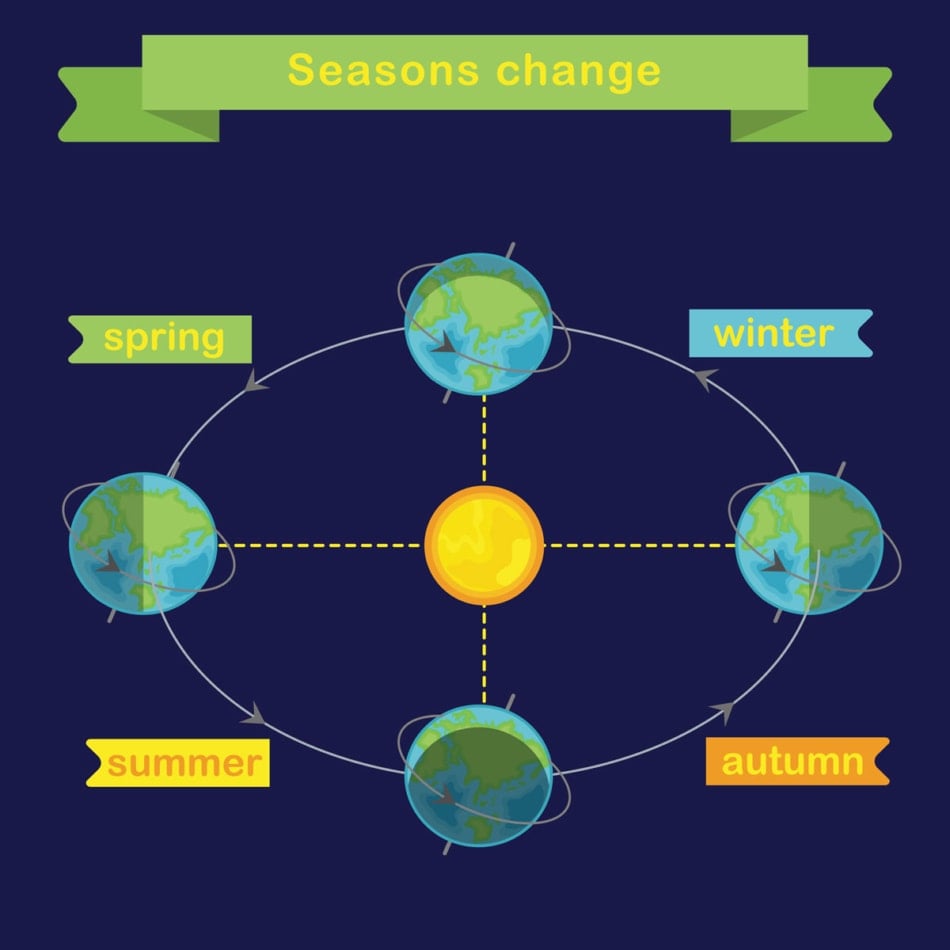
This time instrument was created in 1582 in order to adjust the calendar drift with respect to the succession of the seasons.

The calendar used nowadays in Romania is the Gregorian calendar. The autumn equinox in the Northern Hemisphere of the Earth corresponds to the spring equinox in the Southern Hemisphere. Scientifically, this statement is considered partially true and it can be generally accepted as the apparent diameter of the Sun is about 30 arcminutes. This is the reason why we use to say about the Sun during this moment of the autumn equinox that it is in a direction opposite to that of the vernal point. As we can see by looking at the values of geocentric latitude and right ascension, they are close to 0 and respectively to 12 hours. In 2021, the autumn equinox will arrive on Wednesday, 22 nd of September, at 19 hours 21 minutes and 06.77 seconds UTC, respectively at 22 hours 21 minutes and 06.77 seconds (UTC+3h) which is the Current Local Time in Romania, as we use the Eastern European Summer Time (EEST).Īt the moment of the autumn equinox, in 2021, the geocentric latitude of the Sun equals -0.56″, the right ascension has a value of 11 hours 59 minutes and 59.985 seconds, while his declination is -0.52″. NASA.By definition, the moment of autumn equinox in the Northern Hemisphere corresponds to the precise time when the apparent geocentric longitude of the Sun is equal to 180 degrees.īut, a more common understanding of this phenomenon in our society is that it happens on a certain day of September when daytime equals the duration of nighttime.Marshall Space Flight Center Meteoroid Environment Office.Search this blog Search for: Search Archives Today, we celebrate the equinox as an astronomical event caused by Earth’s tilt on its axis and its motion in orbit around the Sun.Įnjoy the new season – whichever side of the globe you’re on! Additionally, earlier civilizations built the first observatories, like Stonehenge in Wiltshire, England, and the Intihuatana stone in Machu Picchu, Peru, to follow the Sun’s annual progress. They knew that the Sun’s path across the sky, length of daylight, and location of sunrise and sunset all shifted in a regular way throughout the year. The people of ancient cultures used the sky as a clock and calendar.


We will also feel cooler days with chillier winds, and dry, falling leaves. In the Northern hemisphere, the September equinox marks the start of a period bringing us later sunrises and earlier sunsets. But on these special days – the spring and fall equinoxes – the Sun shines almost equally on the Northern and Southern hemispheres. That’s because Earth’s axis is tilted with respect to the Sun-Earth plane. The rest of the year, the Sun shines unevenly over the Northern and Southern Hemispheres. This only happens twice in Earth’s year-long trip around the Sun. Spring twilight at the North Pole begins a few weeks before the vernal, or spring, equinox in March, when the Sun rises above the horizon again. Credit: NASA/JPL-CaltechĪlong with marking the beginning of astronomical fall, the Sun will be exactly above Earth’s equator, moving from north to south, making day and night nearly equal in length – about 12 hours – throughout the world.Īt the North Pole, over the upcoming days, the Sun will sink below the horizon for a kind of twilight from now until sometime in October when it will be completely dark, according to NASA solar scientist Mitzi Adams.

During the equinoxes, both hemispheres receive equal amounts of daylight. An illustration of the March (spring) and September (fall or autumn) equinoxes. 1, however, the September (or fall) equinox gives us the green light to welcome the astronomical fall season in the Northern Hemisphere (and astronomical spring season in the Southern Hemisphere). In meteorology, the fall season begins on Sept.


 0 kommentar(er)
0 kommentar(er)
